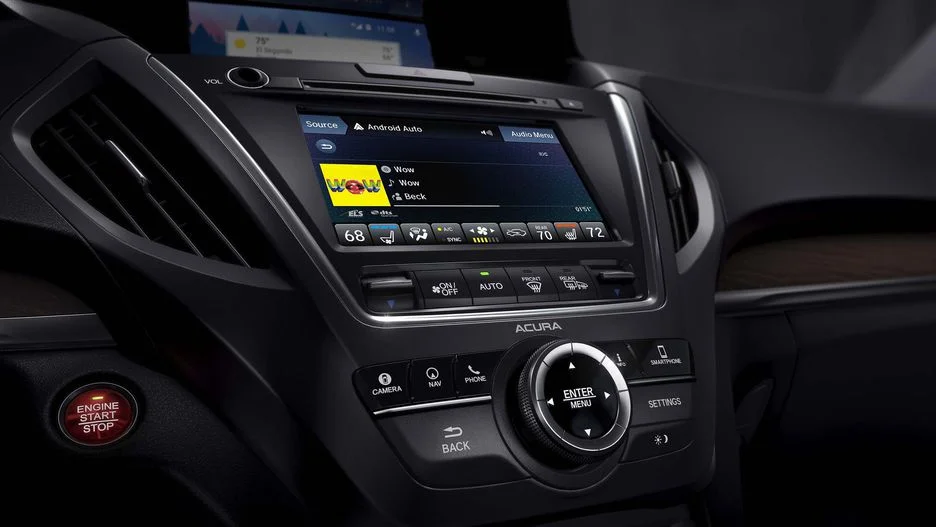Automotive Interface Design
Working with Honda R&D in Marysville Ohio, I assisted and lead the the design process on multiple projects. These projects include information architecture, interaction, and visual design for in vehicle technology and entertainment systems.
ODMD 2.0
Problem
In 2013 Acura launched it's new MDX the ODMD entertainment system. This system featured a dual screen display, with a touch screen on bottom and "jog knob" below both screens that controlled the top screen. You can probably already see how this system would cause many user errors. That year J.D. Power tore the ODMD apart and sparked Acuras redesign of the ODMD. Though the the physical placements of the screens and controls caused usability issues Acura couldn't afford to retool the parts to fix the these issues so all the improvements had to be made to the software only.
Strategy
Through usability testing some primary issues were identified with the menu structures and interaction models used by the ODMD system. Users were never sure which screen to look at while using the "Jog Knob" and important features such as climate controls were stashed in menus that prevented quick access. In order to solve for these issues the features and functions that used to split between the screens was isolated to a specific screen. Climate controls and audio features were contained solely in the touch screen while more complex tasks that required menu navigation were placed in the top screen that was controlled by the "Jog Knob". This let us unbury important features like audio and climate in the touch screen and helped establish mental models for the users on how they would interact with both screens.
Process
After identifying the main issues with the ODMD wireframes, and workflows were developed to help develop prototypes for further user testing and refinement. Once the interactions were mostly set visual concepts were developed and tested to determine the final direction for the visual design. Once all screens were designed assets, specs and redlined PSDs were produced for the development team in Japan.
The Final Visual concept needed to have a luxury feel to it as well as needed to predict future design trends as this concept would be released 3 years later.
The redlining required for development was a bit different. The developers in Japan required touch areas specified with red and green overlays and assets were outlined in red, yellow and magenta depending on asset type.
Precision Concept
Problem
After a successful redesign of the ODMD the next project to come in was to assist with the Precision Concept HMI for the 2018 RDX. This project had already been initiated and an interaction model had already been established. This model is unlike anything on market, it is a track pad that was mapped 1 to 1 to the center screen, allowing the user to operate it without looking away from the road.
Strategy
Since the interaction model was already established there were predefined constraints to work within. With that being said there were many opportunities to improve on the standard functionality that most vehicles at the time included. The home screen allows for customization of apps as well as shortcuts such as specific contacts and nav destinations. The track pad also featured separate zones that allowed for content on the screen to split into primary and secondary content.
Process
For this project my initial involvement was to develop concepts for the visual design of the interface and test with users to determine which direction would be the final. After the concepts were refined down to a single direction the visual language was then applied to specific core screen types. With that start to I then focused on interaction design and specifications for the the rest of the system.
















